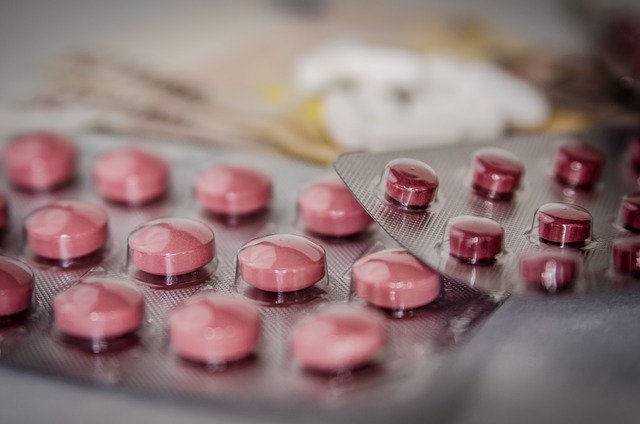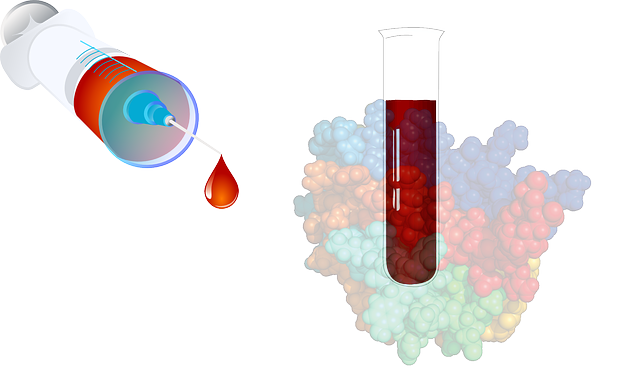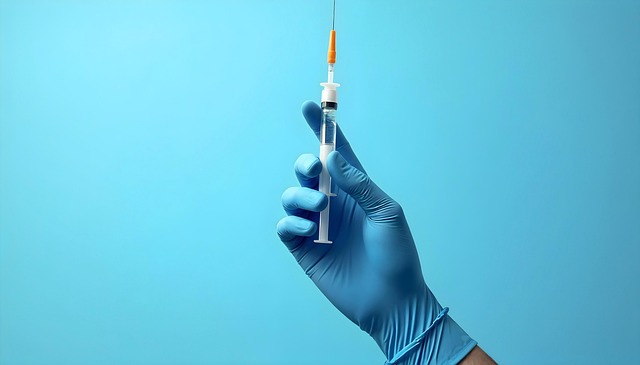GLP-1 receptor agonists (GLP-1 drugs) are a class of medications that mimic natural hormone GLP-1, playing a crucial role in managing type 2 diabetes. These drugs stimulate insulin production, inhibit glucagon release, and reduce appetite for weight loss, offering both improved health and simplified treatment routines. With various types available, including injectables and oral options, each having unique properties, GLP-1 drugs provide effective glycemic control while some also aid in long-term weight management. However, their safety profiles vary, with potential side effects like gastrointestinal issues or pancreatitis. The choice of administration route impacts convenience and pharmacokinetics, with oral formulations facing challenges due to enzymatic degradation. GLP-1 drugs' positive effects on cardiovascular health further enhance their appeal for long-term diabetes management. Continuous advancements in this area promise more convenient dosing and broader applications beyond diabetes.
“Unraveling the complexities of GLP-1 receptor agonists, this comprehensive guide offers an in-depth comparison of their diverse roles in diabetes management. From understanding these powerful medications to exploring their mechanisms of action, we delve into the various types available—injectable and oral formulations alike. Discover how each GLP-1 drug interacts with the body’s natural processes, its efficacy, safety profiles, and long-term impacts on glycemic control and cardiovascular health. Additionally, we gaze into the future, examining emerging trends in GLP-1 drugs and their potential to transform diabetes treatment.”
Understanding GLP-1 Receptor Agonists: Their Role in Diabetes Management

GLP-1 receptor agonists are a class of drugs that mimic the effects of the natural hormone glucagon-like peptide-1 (GLP-1). These drugs play a significant role in diabetes management, particularly for individuals with type 2 diabetes. By activating GLP-1 receptors in the body, these agonists stimulate insulin secretion and suppress glucagon release, helping to lower blood sugar levels.
This mechanism not only improves glycemic control but also promotes weight loss and reduces appetite. The use of GLP-1 drugs offers a more natural approach compared to traditional insulin therapy. They are often prescribed as an oral medication or, in some cases, as injections, providing a convenient and effective solution for diabetes management while enhancing overall patient quality of life.
Types of GLP-1 Drugs: An Overview

GLP-1 drugs, or glucagon-like peptide-1 receptor agonists, are a class of medications designed to mimic the effects of the natural hormone GLP-1. These drugs play a significant role in managing type 2 diabetes and have gained prominence in recent years due to their potential benefits. They work by stimulating insulin secretion when blood sugar levels rise, delaying gastric emptying, and reducing appetite, leading to weight loss.
There are several types of GLP-1 drugs available, each with its unique properties. Exenatide, liraglutide, semaglutide, dulaglitide, and lixisenatide are some of the commonly prescribed agonists. These medications differ in their chemical structure, administration route (injectable or oral), and potency. For instance, exenatide is an injectable drug derived from a snake venom, while liraglutide and semaglutide are long-acting injectables with higher affinities for GLP-1 receptors. Oral GLP-1 drugs like dulaglitide offer convenience but may have lower efficacy compared to their injectable counterparts.
Mechanisms of Action: How They Mimic Natural GLP-1

GLP-1 receptor agonists are a class of drugs designed to mimic the actions of the natural hormone glucagon-like peptide-1 (GLP-1). These drugs play a crucial role in managing blood sugar levels in individuals with type 2 diabetes. By activating GLP-1 receptors, they stimulate insulin secretion and inhibit glucagon release, leading to improved glycemic control.
The mechanism of action involves several key processes. When administered, these agonists bind to GLP-1 receptors located on the surfaces of certain cells in the pancreas and gut. This binding initiates a cascade of cellular responses, enhancing insulin production and suppressing glucagon synthesis. Additionally, they slow gastric emptying, leading to a prolonged feeling of fullness, which can aid in weight management—a common challenge for many patients with diabetes. These effects collectively contribute to better blood sugar regulation, making GLP-1 drugs a valuable tool in the treatment of type 2 diabetes.
Efficacy and Safety Profiles: Comparing Side Effects and Benefits

The efficacy and safety profiles of different GLP-1 receptor agonists vary, offering unique benefits and considerations for patients with type 2 diabetes. These drugs mimic the actions of natural hormones, enhancing insulin secretion and suppressing glucagon production in a glucose-dependent manner. As a result, they effectively lower blood sugar levels, with some agents also providing weight management advantages. However, side effects differ across GLP-1 drugs, ranging from mild gastrointestinal upset to more severe reactions like pancreatitis or kidney problems. Some patients may experience nausea, vomiting, or diarrhea when starting treatment, while others might develop less common but serious adverse events.
When comparing these GLP-1 drugs, understanding their specific effects becomes crucial. For instance, certain agonists have been associated with a higher risk of pancreatitis, while others may predispose patients to kidney issues over time. Additionally, variations in half-lives influence the frequency of injections required. Patients and healthcare providers should carefully weigh the benefits of improved glycemic control and potential weight loss against the range of side effects unique to each GLP-1 drug, tailoring treatment choices to individual needs and tolerances.
Administration Routes: Injectable vs Oral Formulations

The administration route plays a significant role in the pharmacokinetics and overall patient experience of GLP-1 receptor agonists (LRAs). One of the key distinctions between different GLP-1 drugs is their delivery method—whether they are delivered via injection or taken orally. Injectable LRAs, such as exenatide and liraglutide, are administered subcutaneously, offering a convenient yet somewhat less patient-friendly experience compared to their oral counterparts. These injections typically require regular, often daily, administration, which can be cumbersome for some users.
In contrast, oral GLP-1 drugs, like semaglutide and dulaglitide, provide a more user-friendly option with once or twice weekly dosing regimens. This simplicity has the potential to improve medication adherence and quality of life for patients. However, the oral route introduces challenges related to drug absorption and stability, as GLP-1 drugs are susceptible to enzymatic degradation in the gastrointestinal tract. Therefore, pharmaceutical innovation in oral formulations is crucial to enhance the effectiveness and accessibility of GLP-1 LRA therapy.
Impact on Glycemic Control: Blood Sugar Regulation

The impact on glycemic control, particularly blood sugar regulation, is a key aspect when comparing different GLP-1 receptor agonists. These drugs mimic the effects of the natural hormone GLP-1, which stimulates insulin secretion in a glucose-dependent manner and inhibits glucagon release, leading to improved blood sugar levels. By enhancing insulin response, GLP-1 drugs help lower postprandial glucose peaks and promote overall glycemic stability.
Each GLP-1 drug has its unique profile in terms of potency, duration of action, and mechanisms of delivery. Some are administered via injection, while others come in the form of tablets or patches, offering flexibility in treatment options. The choice of GLP-1 drug can significantly influence a patient’s ability to manage their blood sugar effectively, making it an important consideration for healthcare providers when prescribing these medications.
Long-term Considerations: Weight Management and Cardiovascular Health

The long-term effects of GLP-1 receptor agonists on weight management and cardiovascular health are significant considerations when comparing different GLP-1 drugs. These medications have shown promise in maintaining weight loss over extended periods, which is a critical factor for managing type 2 diabetes and reducing the risk of cardiovascular events. Studies indicate that GLP-1 drugs can help patients sustain a healthier body mass index (BMI) compared to other diabetes treatments.
Additionally, research highlights the potential benefits of these drugs in improving heart health. By lowering blood pressure and cholesterol levels, as well as reducing the risk of atrial fibrillation, GLP-1 receptor agonists could play a crucial role in preventing cardiovascular complications. These positive effects contribute to the overall safety profile of GLP-1 drugs, making them attractive options for long-term diabetes management and addressing associated cardiovascular risks.
Future Perspectives: Emerging GLP-1 Agonists and Their Potential

The future of glucose regulation looks promising with the continuous development and refinement of GLP-1 receptor agonists. Emerging GLP-1 drugs are being designed to offer enhanced efficacy, improved pharmacokinetics, and reduced side effects compared to their predecessors. These new agonists aim to provide more convenient dosing regimens, potentially once weekly or even less frequently, while maintaining effective blood glucose control.
Additionally, researchers are exploring the broader potential of GLP-1 beyond diabetes management. Studies suggest that these drugs may have cardiovascular benefits and could play a role in weight management by suppressing appetite and increasing feelings of satiety. The ongoing research and development of GLP-1 drugs signal a promising horizon for individuals with metabolic disorders, offering not only improved blood sugar control but also potential long-term health benefits.
